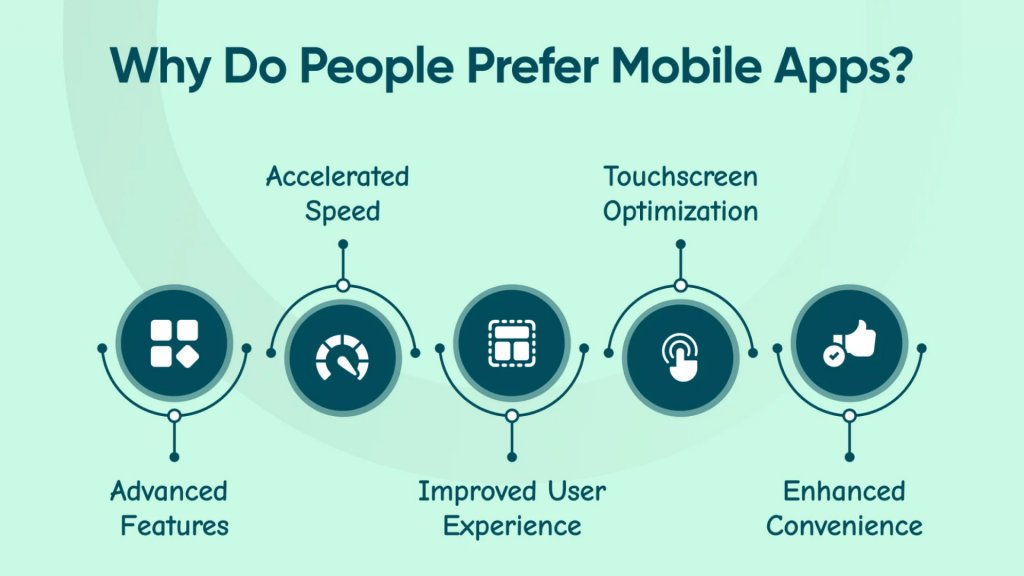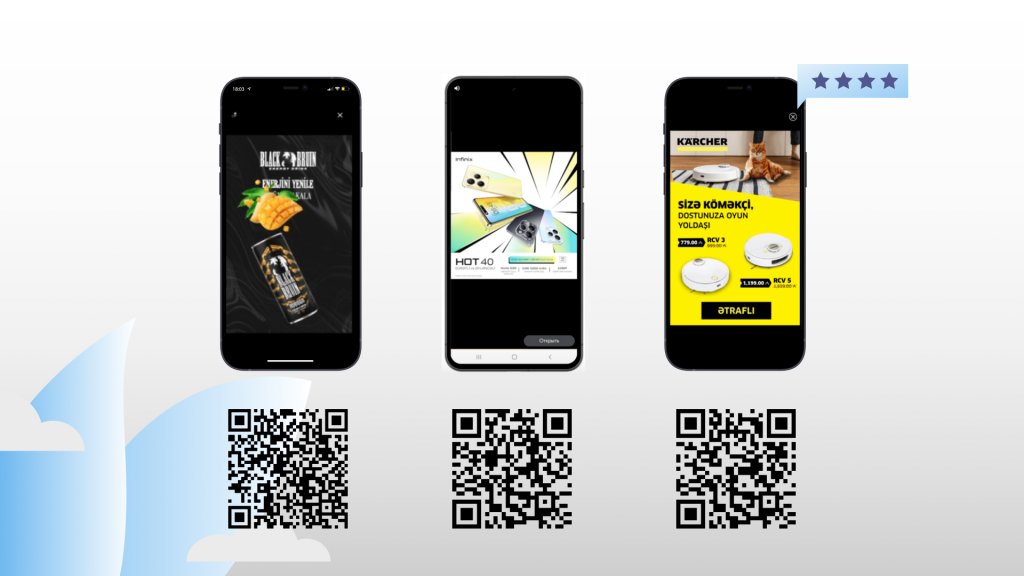Web vs. Mobile Apps: Comparing Customer Journeys
The customer journey on web and in mobile apps differs significantly. What works well on desktop doesn’t always translate effectively to mobile.
Understanding these differences is key to building successful digital strategies.
In this article, we’ll explore the key distinctions between web and mobile journeys according to AdRoll, highlight the strengths of each channel, and show what performs best in today’s landscape.
The Web Journey
The web remains a familiar and widely used channel. According to Amplitude, in some categories, web traffic still matches or even exceeds mobile app usage.
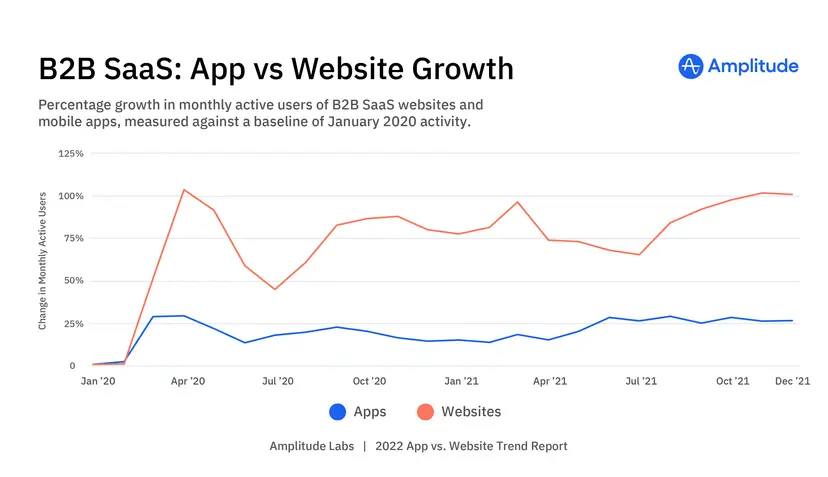
Key Characteristics of the Web Customer Journey (CJM)
- Longer Sessions
Users tend to spend more time on websites — reading articles, exploring information, filling out forms, or downloading resources.
- Information-Driven Research
Web users expect access to comprehensive, in-depth content. They often keep tabs open to revisit later and continue their exploration.
- Rich Content Variety
Web platforms support long-form content, blogs, analytical pieces, and complex forms – things that are harder to consume on smaller mobile screens.
Typical Web User Actions:
- Searching for detailed information and insights
- Working with forms, applications, or downloading materials
- Comparing options, switching between pages and browser tabs
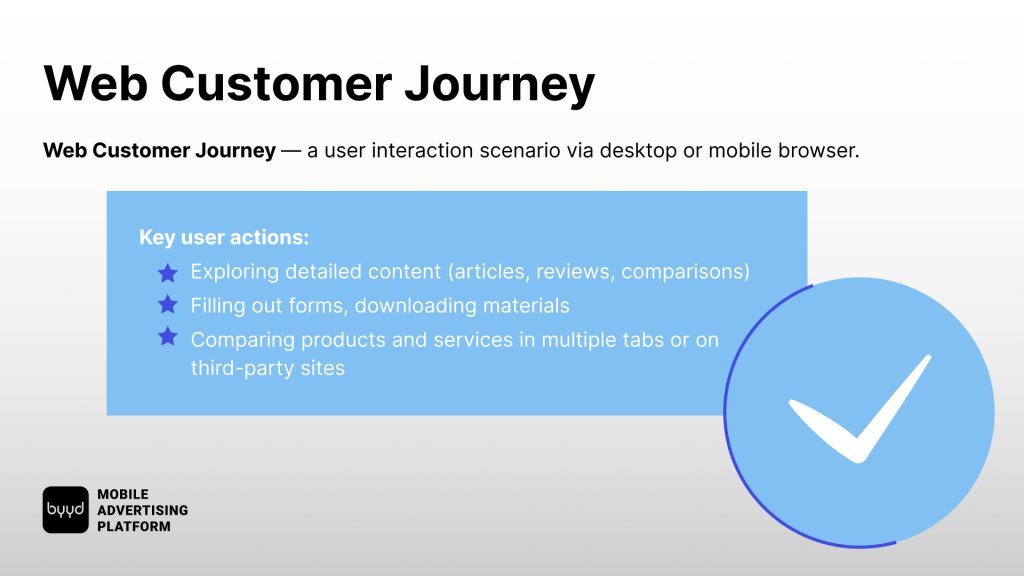
The Mobile App Customer Journey
Mobile apps offer a fast and convenient way to interact with a brand – and their popularity keeps growing.
Users value simplicity, speed, and the ability to complete tasks in just a few taps, without extra steps or lengthy content exploration.
Key Characteristics of the Mobile Customer Journey
- Higher Conversion Rates
Mobile apps deliver conversion rates that are 157% higher than mobile websites, thanks to faster access and smoother navigation.
- Speed and Convenience
Apps simplify the user journey – fewer steps from app launch to completing a key action.
- More Products Viewed
On average, users view 4.2 x more products per session in apps compared to mobile websites.
Typical Mobile User Actions:
- Quickly find and purchase a product or service
- Receive personalized offers and push notifications
- Complete key actions with minimal steps
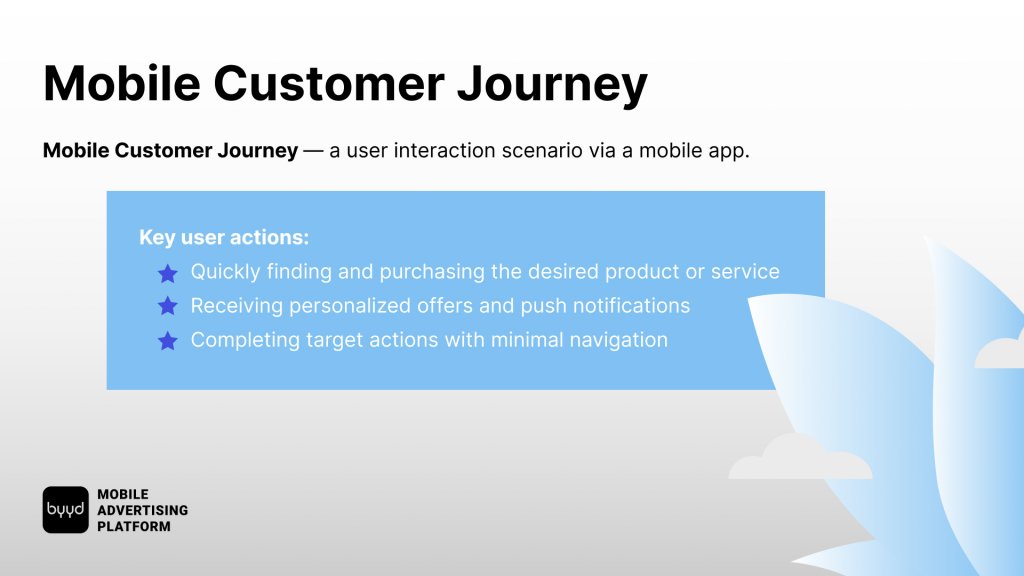
The only real challenge is motivating users to install the app.
To lower this barrier, many advertisers promote their apps (or other products) through third-party platforms.
That’s exactly what BYYD does: we place ads inside popular mobile apps where users are already engaged and focused.
You can learn more about our capabilities in the presentation.
Key Differences Between Web and Mobile App Customer Journeys
We’ve looked at the customer journeys across both web and mobile. While the structure may seem similar, the user’s goals and ways of interacting with a brand differ significantly.
Here are some of the main distinctions:
- Session Duration
Web users tend to spend more time exploring content. They open multiple tabs, return to pages of interest, and often dive deep into the information.
Mobile users, on the other hand, prefer quick interactions. Sessions are shorter, and tasks are completed in just a few taps.
- Content Type
Web is ideal for in-depth, analytical content like long-form articles, detailed product pages, and comparisons.
In mobile apps, content needs to be short, clear, and visually accessible. It’s more about speed and clarity than depth.
- Purchase Behavior
Purchases on the web are often more deliberate – users compare options, study features, and take time to decide.
In mobile apps, purchases are more impulsive. Thanks to one-click payments and stored user data, orders can be completed in seconds.
- Technical Considerations
Web platforms can support heavier functionality like complex animations, forms, or embedded videos.
In mobile apps, performance is key — fast load times, smooth UX, and native features like push notifications, geolocation, camera access, and biometric login all play a big role.
Which Advertising Methods Work Best for Web and Mobile Apps?
Web and mobile require different advertising approaches, as user goals and ways of interacting with content vary across platforms.
- For Web
Web advertising is ideal for targeting users who are in the research or consideration stage.
Effective tools include:
- Contextual advertising (e.g., search engine ads)
- SEO optimization
- Banner and display formats
- Long-form content such as articles, blogs, research pieces, and webinars
These formats perform especially well when users are actively looking for information and comparing options.
- For Mobile Apps
Mobile advertising covers all stages of the funnel – from acquisition to engagement, retention, and reactivation.
Effective formats include:
- App Store and Google Play ads
- Targeted ads on social media and within other apps
- Push notifications and deep links for re-engagement
- In-app advertising (native and interactive formats)
At BYYD, we focus on in-app advertising – one of the most powerful channels not only for driving installs, but also for boosting brand awareness, engagement, and performance.

How to Measure Ad Performance in Web and Mobile Environments
Measuring ad effectiveness varies by platform – web and mobile each require different tools and approaches.
- For Web
The main tools are tracking pixels and UTM tags, which help monitor user behavior such as clicks, content engagement, conversions, and purchases.
This is the standard way to analyze campaign performance in desktop and browser environments.
- For Mobile Apps
In mobile, Brand Lift studies and other survey-based methods are increasingly used to measure how advertising impacts brand perception.
Key mobile metrics include:
- Reach
- CTR
- Conversions
- Viewability
- Time spent in the app or on site
At BYYD, we take a comprehensive approach:
We combine multiple metrics, work with leading analytics platforms, and support all major traffic tracking systems.

Conclusion
Both web and mobile are essential communication channels – but each requires a tailored approach.
To maximize results, it’s important to adapt both your advertising and analytics strategies to the unique characteristics of each platform.
We recommend putting a stronger focus on mobile – that’s where your audience’s attention is today.
Check out our case studies and see how mobile can power your next campaign.
Found this helpful? Share it with your friends and colleagues!
For consultations and partnership inquiries:
- Submit a request on our website
- Email us at hello@byyd.me
